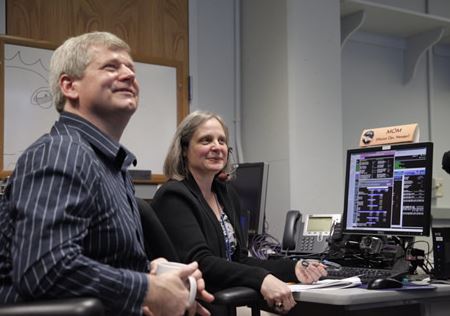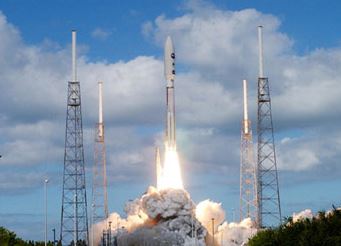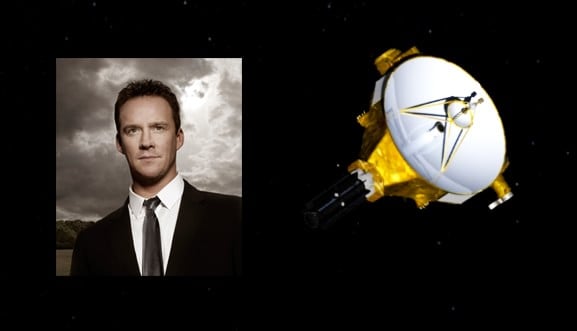New Horizons, the NASA spacecraft that left earth in 2006 and has traveled three billion miles, is drawing close to the the dwarf planet Pluto.
Pluto, which is 1/6 the mass of the Moon and 1/3 its volume, was discovered in 1930. Because of its eccentric and highly inclined orbit, its distance from the sun ranges from 4.4 billion to 7.4 billion kilometers (2.7 billion to 4.6 billion miles).
Pluto was originally classified as a planet, the ninth from the Sun. However, in 2006 its status was relegated to “dwarf planet” in the Kuiper Belt (a region of the Solar System beyond the planets).
The Kuiper Belt and another band of icy objects even further away, the Oort Cloud, are believed to be the source of comets.
18 periods of hibernation
For a total of 1,873 days, about two-thirds of its time since take-off on January 19th, 2006, New Horizons has been “hibernating” in order to preserve its electrical components. It woke up on December 6th, 2014.
Alice Bowman, New Horizon’s Operations Manager, and team member Karl Whittenburg smile when it is confirmed the spacecraft has woken up from hibernation on Dec 6. (Photo: Johns Hopkins Applied Physics Laboratory)
Its 18 different periods of hibernation, from the middle of 2007 to 2014, ranged from 36 to 202 days in length. the last one being when it was 162 million miles (261 million kilometers) from Pluto. At that point, signals travelling at the speed of light took four hours and 26 minutes to reach earth, specifically NASA’s Deep Space Network station in Canberra, Australia.
Glen Fountain, New Horizons project manager at the Johns Hopkins Applied Physics Laboratory (APL), said regarding the wake-up:
“Technically, this was routine, since the wake-up was a procedure that we’d done many times before. Symbolically, however, this is a big deal. It means the start of our pre-encounter operations.”
New Horizons was launched on Jan 1, 2006, aboard an Atlas V rocket from Cape Canaveral Air Force Station in Florida. (Photo: Johns Hopkins Applied Physics Laboratory)
On Januray 15th, 2015, New Horizons will start sending us images of Pluto. Excited scientists say they will be even better than those sent to earth from the Hubble Space Telescope.
The New Horizons team will spend the next several weeks making sure all the spacecraft’s systems and instruments are working properly. Its closest approach to Pluto will occur on July 14th, but there will be plenty of highlights before this date.
The spacecraft has been on a journey to “a new class of planet we’ve never seen, in a place we’ve never been before,” said Dr. Hal Weaver, who works at the APL.
Weaver added:
“For decades we thought Pluto was this odd little body on the planetary outskirts; now we know it’s really a gateway to an entire region of new worlds in the Kuiper Belt, and New Horizons is going to provide the first close-up look at them.”
New Horizons celebrated its wake up from hibernation to English tenor Russel Watson’s (pictured above) “Where My Heart Will Take me.” (Photo: NASA)
Watson himself recorded a special version of the song to honor New Horizons. As soon as it was confirmed that the spacecraft had woken up, the song was played in New Horizons’ mission operations.
Alan Stern, New Horizons’ principal investigator, from Southwest Research Institute, Boulder, Colorado, said:
“This is a watershed event that signals the end of New Horizons crossing of a vast ocean of space to the very frontier of our solar system, and the beginning of the mission’s primary objective: the exploration of Pluto and its many moons in 2015.”
Video – NASA probe to explore Pluto




